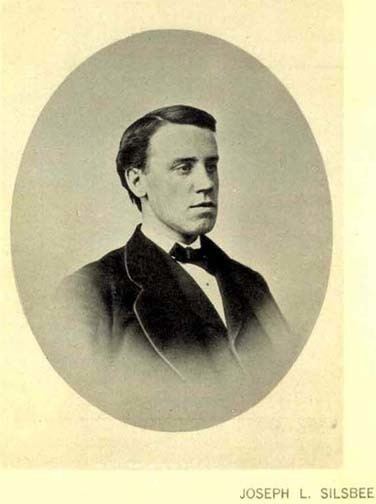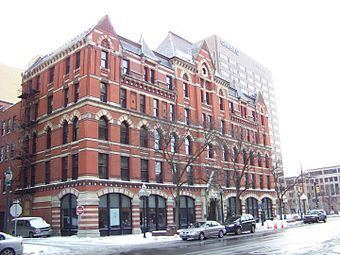Name Joseph Silsbee | Role Architect | |
 | ||
Structures | ||
Lost Gem: Garfield Park Bandstand by architect Joseph Lyman Silsbee
Joseph Lyman Silsbee (November 25, 1848 – January 31, 1913) was a significant American architect during the 19th and 20th centuries. He was well known for his facility of drawing and gift for designing buildings in a variety of styles. His most prominent works ran through Syracuse, Buffalo and Chicago He was influential as mentor to a generation of architects, most notably architects of the Prairie School including the famous architect Frank Lloyd Wright.
Contents
- Lost Gem Garfield Park Bandstand by architect Joseph Lyman Silsbee
- Early life
- Career
- Style of architecture
- References

Lost Gem: Garfield Park Bandstand by architect Joseph Lyman Silsbee
Early life
Joseph Lyman Silsbee was born on November 25,1848, in Salem, Massachusetts. Silsbee graduated from Phillips Exeter Academy in 1865 and Harvard in 1869. He then became an early student of the first school of architecture in the United States, the Massachusetts Institute of Technology.
Career
After graduating from Harvard and MIT, he served an apprenticeship with Boston architects Ware & Van Brundt and William Ralph Emerson, respectively. Silsbee traveled around Europe before moving to Syracuse, New York in 1874. In 1875, he married Anna Baldwin Sedgwick, daughter of influential lawyer and politician Charles Baldwin Sedgwick. He had a prolific practice and at one point had three simultaneously operating offices. He had offices in Syracuse (1875–1885), Buffalo (Silsbee & Marling, 1882–1887), and Chicago (Silsbee and Kent, 1883–1884). From 1883–1885, his Syracuse office was a partnership with architect Ellis G. Hall. Silsbee's Chicago office had a number of architects who were later to become known in their own right, including:
Silsbee was one of the first professors of architecture at Syracuse University, another one of the earliest schools of architecture in the nation. He was a founding member of the Chicago and Illinois Chapters of the American Institute of Architects. In 1894, Silsbee was awarded the Peabody Medal by the Franklin Institute for his design for a Moving Sidewalk. This invention had its debut at the Worlds Columbian Exposition and saw usage in subsequent Worlds Fairs.
Style of architecture
Among his most prominent architectural works is the landmark Syracuse Savings Bank Building (1876). Built next to the Erie Canal on Clinton Square in Syracuse, it is often referred to as a textbook example of the High Victorian Gothic style. Silsbee also designed the White Memorial Building (1876), the Amos Block (1878), and the Oakwood Cemetery Chapel (1879–80), all extant in Syracuse. Upland Farm (1892), the lost mansion designed for Frederick R. and Dora Sedgwick Hazard in nearby Solvay, New York is an example of the fashionable residential work that Silsbee was best known for. Silsbee also designed various dwellings around New York State in Ballston Spa, Albany, and Peekskill (in the latter place for Henry Ward Beecher)
Silsbee designed the lavish interiors of Potter Palmer's "castle" in Chicago. Several of his residential designs survive in Riverside, and Evanston Illinois. His most prominent surviving work in Chicago is the Lincoln Park Conservatory. Silsbee designed the movable walkway at the World's Columbian Exposition pier in 1893, and submitted plans to provide this improvement for the Brooklyn Bridge in 1894, although these plans were never executed.
In his 1941 autobiography, Frank Lloyd Wright wrote:
Silsbee could draw with amazing ease. He drew with soft, deep black lead-pencil strokes and he would make remarkable free-hand sketches of that type of dwelling peculiarly his own at the time. His superior talent in design had made him respected in Chicago. His work was a picturesque combination of gable turret and hip with broad porches quietly domestic and gracefully picturesque. A contrast to the awkward stupidities and brutalities of the period elsewhere.
Silsbee practiced architecture until his death in 1913.
